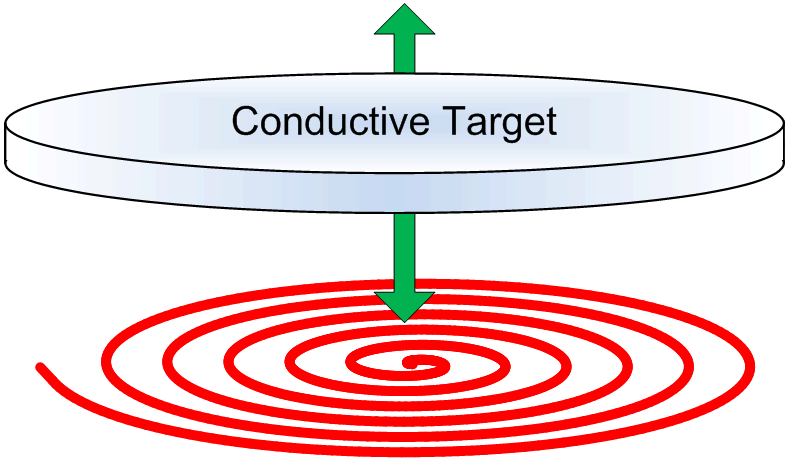SNOA930C March 2015 – May 2021 LDC0851 , LDC1001 , LDC1001-Q1 , LDC1041 , LDC1051 , LDC1101 , LDC1312 , LDC1312-Q1 , LDC1314 , LDC1314-Q1 , LDC1612 , LDC1612-Q1 , LDC1614 , LDC1614-Q1 , LDC2112 , LDC2114 , LDC3114 , LDC3114-Q1
2.1 Inductor Shape
The inductor shape is an important characteristic of the inductor because it determines the shape of the generated magnetic field. A circular spiral generates a more symmetrical magnetic field than other shapes, and is the optimum shape from an inductance verus RS consideration. In general, it is recommended to use a circular inductor for the highest possible sensing capabilities, unless specific system requirements warrant the tradeoffs of an alternative shape.
For nearly all proximity applications, in which a target is moved orthogonally to the sensor plane, the appropriate shape is a circular sensor that has the best Q (and lowest RS) for a given area, as shown in Figure 2-2.
 Figure 2-2 Axial Sensing with Circular Spiral Inductor
Figure 2-2 Axial Sensing with Circular Spiral InductorFor other applications, different shapes may be more suitable. For PCB based sensors, designing alternative shapes is much easier than wire-wound inductors. For example, rectangular coils can be used to sense accurate movement along the X-axis while having reduced sensitivity to a shift in the Y-axis.